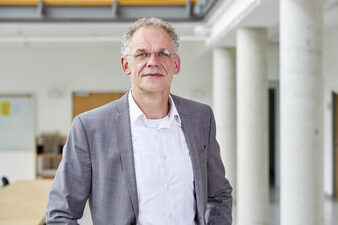120 architecture students from Fachhochschule Dortmund have worked out the potential of lively urban development for the Hombruch district: 55 project proposals have been submitted for an almost comprehensive redesign of the district's residential areas.
"The focus is on social solutions that could be implemented quickly and cost little," says Prof. Christian Moczala from the Faculty of Architecture at Dortmund University of Applied Sciences and Arts, who supervised the project. "Our goal is more and better living in the districts - in close interaction with the environment."
Exciting ideas for the future
Under the title "Recycling and Re-Use", Lea Traue and Vivienne Potthoff trace an arc from waste avoidance to a more conscious approach to existing buildings. Using the example of the street Am Surck in Barop, they show the dormant beauty of the existing buildings and give them a new lease of life with a coordinated color scheme for the facades and the redesign of the street. In the future, they also want to use recycled windows to build community greenhouses on some of the flat roofs in the district.
Thomas Göring and Jannik Möllmann in Menglinghausen show that new living spaces can also enhance traditional single-family housing estates. With their idea "Share mobility - stay together!", charging stations for electric cars, car and bike sharing services are becoming a neighborhood meeting place.
Gardening together via app
In Barop, Alexandre Ferreira and Odeh Rishmawi are planning repair pavilions made from dismantled façade elements on Karl-Wenk-Straße. "It's not just since the coronavirus home office that we've seen manufacturing and new small-scale businesses pushing their way back into the districts," emphasizes Prof. Moczala.
Alina Gersting and Malin Schulz show in a completely different way with "Digital Gardening" how the many green and garden areas in Hombruch can be better used to grow fruit and vegetables. Cell phones and smart devices create higher yields and more time for the deckchair.
"The overall view of the 55 visionary study projects gives an idea of what life could look like in a CO2-neutral Hombruch and how open spaces and buildings could change," says Prof. Moczala. The university lecturer is convinced: "This is now a tangible prospect."

